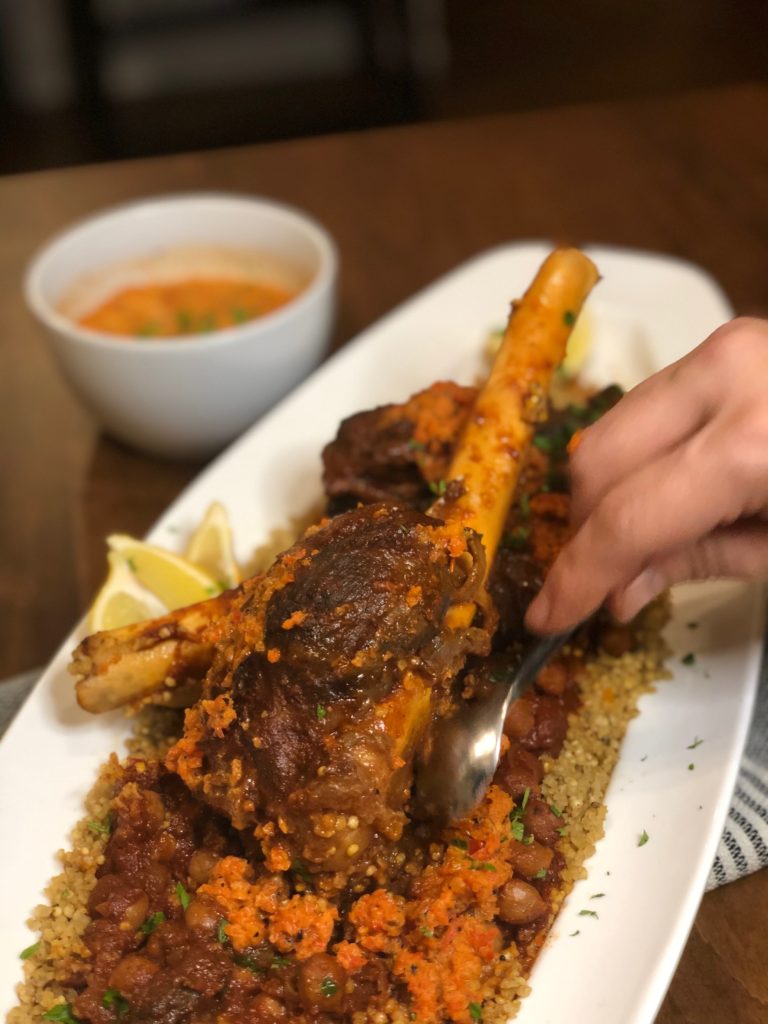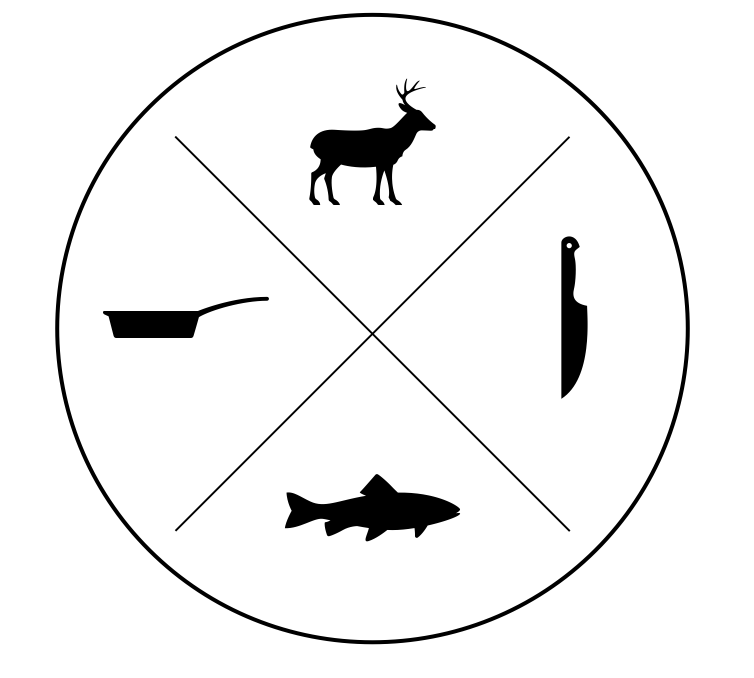
Merguez-Spiced Venison Shanks
If I had one wish for the culinary future of America’s wild cervids it would be that every shank taken from the woods—from now until the day that humanity meets its inevitable end— should see its way clear to a proper preparation—no longer banished to the grind piles of a thousand cutting boards, but instead placed on a pedestal as the gold standard for what venison can and must be.
There was a time in the not-so-distant past when the accepted method for butchering venison shanks involved a crude filleting of the meat from its bone before unceremoniously plunking it atop the nearest grind pile, or—God forbid—wantonly tossing the fine cut out altogether.
Luckily, proper braising techniques are becoming the norm amongst culinarians who choose to hunt and gather their own meat, and as a result, many hunters are starting to view the shank in a much brighter light than the dim glow that it once occupied.
Indeed, when the shank muscle, which technically amounts to the shin or calf of any hoofed animal, is submerged in a flavorful liquid and cooked low and slow for a period of hours, a gastronomic transformation occurs and a thing of beauty is revealed.
The same connective tissue that makes shank meat wholly inappropriate for grinding and sausage making, breaks down during a long slow braise, lending the finished dish a type of creaminess that betrays lean venison altogether.
A Side Note on Merguez
This particular recipe draws on the long, rich history of Northwest African or Maghreb cuisine. It incorporates a robust spice blend (cumin, coriander, fennel and sweet paprika just to name a few) more commonly found in the Merguez Sausage.
The term Merguez usually refers to a type of sausage made from lamb and/or beef that originated in Northwest Africa in the 12th century. It is still revered in North Africa today and has been popular in France since the end of the twentieth century.
Instead of seasoning ground venison with Merguez spices and stuffing it into casings—something I will reserve the right to do in future additions to this here wild food documentation project—I decided to incorporate them into a low and slow shank braise, along with chickpeas and rich turkey stock, and serve the finished product over a bed of millet.
Millet is a hardy North African grain that, for reasons unbeknownst to me, tends to play second fiddle to less interesting grain varietals like the ubiquitous quinoa. Save the quinoa for the vegans. I’ll take millet any day of the week.

Atop and alongside the finished shanks, I served copious amount of Harissa, which is essentially a roasted red pepper, lemon and olive oil paste. I gather that in a traditional Merguez sausage, the Harissa would be incorporated into the sausage mixture itself, but it works great as a garnish and/or a dipping sauce for Merguez-braised venison shanks and lends a nifty bit of deconstruction to the finished dish.
Ingredients
For the Merguez Spice Blend
Whole Cumin Seeds, 1 tablespoon
Whole Fennel Seeds, 1 tablespoon
Whole Coriander Seeds, 1 tablespoon
Sweet Paprika, 1/4 cup
Fresh Black Pepper, 1 tablespoon
Sugar, 2 teaspoons
Ground Allspice , 1 teaspoon
Cayenne, 1 1/2 teaspoons
For the Braising Liquid
3-4 cups Turkey, Chicken or Venison Stock
1 can Crushed Tomatoes
2 Tablespoons Tomato Paste
1 sweet onion, coarsely chopped
One can Chickpeas AKA Garbonzo Beans
For the Shanks
2-4 Venison Shanks
Flour, 1 cup
Salt
Pepper
Butter
Olive Oil
Procedure
- Pull shanks from the fridge, season with salt and give them time to come up to the ambient temperature of the kitchen.
- Toast the cumin, corriander, and fennel seeds in a saucepan or the Dutch Oven you plan to use later for braising your shanks. Do so over medium heat until the seeds become fragrant. This should take about one minute. Remove the toasted seeds from the pan, let them cool, then grind them in spice grinder or crush using a mortar and pestle. Add the remaining spices (paprika, cayenne, allspice, sugar, black pepper), mix well, and reserve the Merguez spice blend for later in an airtight container.
- Melt butter and olive oil in your Dutch Oven, dredge shanks in flower and brown them thoroughly on all sides over medium high heat. Do so in batches as not to overcrowd the pan, and when all the shanks are adequately browned, reserve them on a plate nearby.
- Add your coarsely chopped onion to the pan. Cook this over medium heat until it is browned, then add 4 tablespoons of the reserved Merguez spice mix and 2 tablespoons of tomato paste, cooking just a few minutes until the aroma is noticeable. Now deglaze the pan with one cup of stock and add the crushed tomatoes.
- Reintroduce the browned venison shanks to the Dutch Oven along with the chickpeas and enough stock to submerge the shanks almost fully but not quite.
- Seal the Dutch Oven with its lid and place it in a 300 degree oven for at least 2 and 1/2 hours. Your cooking time could vary widely depending on the age of the animal and the size its shanks. This is wild game after all and there are no hard and fast rules like you have with domestic beef and pork. When braising shanks, I like to check on them every hour or so just to make sure the braising liquid hasn’t evaporated to the point where I’ll need to add more stock to prevent the meat from becoming dry.
- While the shanks are approaching your desired level of tenderness ( for me that is complete fall-off-the-bone status) go ahead and prepare the Harissa and the millet.
- When plating, lay the shanks atop a bed of millet, ladle them with the chickpea-based braising liquid in which they cooked, garnish with fresh chopped parsley, lemon wedges, harissa sauce and serve family style with a bowl of harissa on the side for passing ’round the table.





